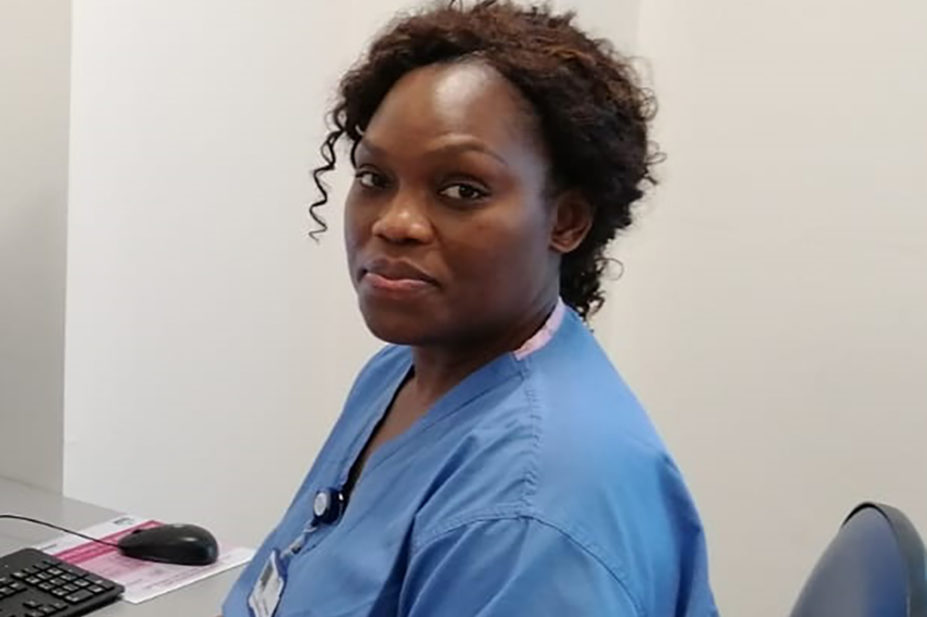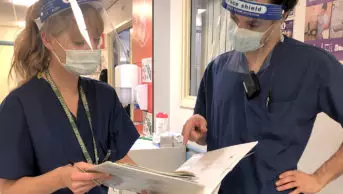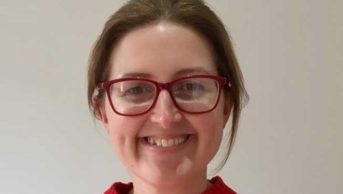
Ade Deekae
I work as a senior child and adolescent mental health services (CAMHS) pharmacist at NHS Fife. My role was newly created in early 2019 and involves providing pharmaceutical care to children and young adults requiring mental health support, including those with learning difficulties.
Depending on the mental health need, children or young people can be referred to CAMHS by schools, other healthcare professionals including GPs, physiotherapists or occupational therapists, or even through self-referral by parents and guardians. Once the child or young person has been assessed by a psychiatrist or paediatrician [for neurodevelopmental conditions], they are referred to me for follow-up or medicines management, as appropriate. Since starting the post, I have had to complete specific training related to working with children and an independent prescribing qualification.
Over the years, there has been an increasing number of challenges with identifying and managing mental health problems in children and young adults, particularly as the focus in the UK has been predominantly on adult mental health. As a result, the Scottish government published a ten-year mental health strategy in 2017 as an approach to transform mental health services, with a specific focus on prevention and early intervention[1]. The Royal Pharmaceutical Society (Scotland) in late 2020 also published a mental health policy, raising awareness of pharmacists developing their roles within mental health[2].
Prior to taking up the CAMHS post, I have worked in various specialities, but nothing compares to paediatric mental health. There is a requirement to be extra meticulous when scrutinising prescriptions and medicine choices, especially since licensed drug use for this patient group is often limited.
8:30 – start
Today I am supporting the attention deficit hyperactivity disorder (ADHD) service. I typically support the generic CAMHS team two days of the week, and the ADHD service the remaining three days. I am also involved with reviewing and auditing prescribing data within CAMHS, developing and reviewing local guidelines (such as managing acute disturbance in children), and organising teaching sessions for staff members on topics such as prescribing updates and rational prescribing.
I start the day by getting changed into my scrubs. This has been a requirement since the beginning of the COVID-19 pandemic.
I have clinic all day and my first patient is expected at 09:00. I utilise the first 30 minutes to check my email, prioritising and noting down actions that need following up later. I have two medication requests from ADHD nurses, a reply to a previous query put through to a specialist nurse and another from a parent returning a scanned copy of a signed medication initiation consent form.
09:00
With the emergence of the coronavirus pandemic and subsequent lockdowns, face-to-face clinics have been near impossible. The service has had to adapt by embracing new ways of working through remote consultations to ensure continuity of care.
My clinic is now a mix of telephone and video consultations, which involve medication reviews, dose titration follow-ups and medication education and counselling sessions for patients and their parents/guardians, who are being managed by the service.
There are five patients booked in for review throughout the day. Each patient is allocated an hour slot between clinics to allow for the consultation and to tidy up necessary documentation afterwards.
My first patient is a telephone follow-up call to review a dose titration of lisdexamfetamine, an ADHD stimulant treatment initiated two weeks prior. During the consultation, I take note of physical observation readings (blood pressure, pulse and weight) taken at home, check for any adverse effects experienced and discuss their response to treatment using the Conners rating scale questionnaire completed by their parents. All being OK, I recommend an increase to the dose and schedule the next follow-up appointment.
10:00
I log on to our digital platform and invite my next appointment into the virtual consultation room. They are the parent of a six-year-old boy who recently has been diagnosed with ADHD by a paediatrician. During the consultation I talk through my presentation slides, focusing on information about stimulant ADHD medication, the benefits of treatment and other services available for children with ADHD, followed by answering questions from the parent. At the end of the consultation, I ask them to take the information provided and review it to determine if they are happy to continue with treatment. I provide them with a consent form to read, sign and return to the service.
11:00
My next appointment is a scheduled telephone consultation involving a medication review. Unfortunately, I was unable to reach the family and recorded the appointment as ‘not attended’ on the clinical appointment system.
11:15
With some time on my side, I use this opportunity to complete the necessary documentation to refer the parent I saw earlier in the morning for psychology-led support classes. Having a child with ADHD can affect families in many ways and the programme aims to provide parents with information about ADHD, behaviour, impact on schooling and how to support siblings.
I also manage to work through some emails. Two are from CAMHS consultants. In one of these I am being asked to follow up ADHD medication dose titration for a patient, while the other contains a query on how to manage a slightly raised prolactin level in a teenager started on a second-generation antipsychotic to manage an eating disorder with associated aggressive behaviours. I formulate a response to both queries and signpost the consultants to local monitoring guidelines to facilitate patient follow-up.
My other two emails required calling a GP surgery and community pharmacy respectively to resolve medication-related issues.
13:30
Just before my afternoon clinic, I follow up on some outstanding tasks. The first is for a prescription request. I check the patient’s notes to confirm what medication they are currently on and confirm that a repeat is due to be issued. I then write a repeat prescription and mark for delivery to the designated pharmacy.
I quickly phone the parents of another patient to ensure they have received a consent form for medication counselling. I also organise an appointment for the patient to have some assessments carried out at their GP surgery to determine whether treatment should be started. This includes sleep scores, appetite, mood, and behaviour at home and at school, as well as social relationships.
Finally, I call one of the local pharmacies to clarify a dispensing issue related to the formulation of melatonin previously prescribed for a patient.
14:00
I have a follow-up video consultation for a patient recently switched from stimulant to non-stimulant treatment owing to lack of optimal effect and an associated elevated blood pressure while on a high-dose stimulant. Today is four weeks post non-stimulant treatment initiation; however the patient’s mum tells me their child’s appetite has diminished and she is worried about a decrease in weight. The patient’s blood pressure and pulse measurements at home are within the normal range for their age. There are also no cardiac symptoms or other adverse effects reported today.
The child’s weight is recorded at home during the video consultation and I provide the patient’s mum with advice on diet. I recommend continuing the non-stimulant at the current dose (although it is sub-optimal, as per licensed recommended maintenance dose) without further increase until the next follow-up, which is booked for two weeks’ time. At this point the patient’s weight should be recorded again and therapy reviewed for continuation or cessation, depending on observations and feedback. The mum is reassured, but I advise her to contact the service if her child’s weight falls any further.
16:00 – finish
At the end of each clinic day, I usually have prescriptions that have been written but need to be processed and dispensed. Owing to COVID-19 and the need for social distancing, the CAMHS service has had to make special arrangements for prescriptions to be delivered to designated pharmacies chosen by parents/guardians for dispensing. Prescriptions are sorted according to area and handed to our administration staff for further processing prior to collection for delivery.
I wipe down my desk, change out of my scrubs and head home for the day.
Box: Are you interested in a similar role?
- My role is typically an NHS agenda for change band 7 or 8a post, depending on experience;
- Ideally, you will have a postgraduate degree in clinical pharmacy or mental health, and an independent prescribing qualification;
- You must have a friendly attitude and be able to work independently to support children and young people;
- You need to keep up with the latest prescribing guidelines and literature, so being passionate and committed to learning is a must;
- Make sure you use every opportunity to attend conferences and workshops relating to children and young people’s mental health;
- Do consider becoming a member of relevant local and national mental health bodies, such as the College of Mental Health Pharmacy and British Association for Psychopharmacology.
- This article was amended on 26 February 2021 to clarify that lisdexamfetamine is not first line stimulant treatment for ADHD in children
- 1Scottish Government. Mental Health Strategy 2017 – 2027. The Scottish Government’s approach to mental health from 2017 to 2027 – a 10 year vision. Population Health Directorate 2017. https://www.gov.scot/publications/mental-health-strategy-2017-2027/pages/10/ (accessed 9 Feb 2021).
- 2Royal Pharmaceutical Society. Improving care of people with mental health conditions: how pharmacists can help. Royal Pharmaceutical Society 2020. https://www.rpharms.com/Portals/0/RPS%20document%20library/Open%20access/Policy/Scottish%20Mental%20Health%20Policy%202020.pdf
You may also be interested in

‘Pharmacy plays a vital role in maintaining patient flow and efficiency of discharges’ – a day in the life of an orthopaedic pharmacist

‘I help trainees get the most from their placement’ — a day in the life of a pharmacy preregistration training lead
